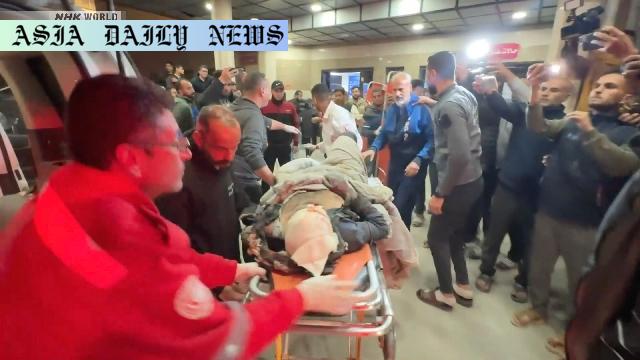Ceasefire: Renewed Israeli airstrikes in Gaza raise concerns as ceasefire agreement between Israel and Hamas faces unprecedented strain.
- Israeli airstrikes in Gaza kill over 400, adding strain to the ceasefire.
- Netanyahu accuses Hamas of rejecting proposals and using human shields.
- Talks for a permanent truce based on withdrawal remain stalled.
- Additional tensions arise with Houthi attacks in the Red Sea.

Escalating Violence Imperils Ceasefire Agreement
The fragile ceasefire between Israel and Hamas, initiated in January, faces a grave threat as Israeli airstrikes in Gaza have resulted in over 400 fatalities, according to Gaza health authorities. These renewed offensives are seen as a direct response to Hamas’s alleged rejection of a U.S.-backed proposal aimed at extending the ceasefire and fostering negotiations for a permanent truce. Israeli Prime Minister Benjamin Netanyahu has justified the operations, stating that Israel solely targets Hamas militants, accusing the group of exploiting civilians as ‘human shields.’ However, the continuation of airstrikes into Wednesday, with 14 further civilians killed in areas like Khan Younis in southern Gaza, has escalated concerns of collateral damage and civilian suffering. International observers fear this could damage efforts to sustain past agreements while complicating future peace dialogues.
Challenges to Long-term Truce
The ceasefire began with hope for a phased resolution, including the withdrawal of Israeli forces from Gaza and normalization of relations. However, the present moment demonstrates a lack of progress. Stalled negotiations have further fueled hostilities and left the arrangements teetering on the edge of collapse. Hamas has categorically opposed proposals seen as undermining Palestinian sovereignty but Israel interprets these rejections as unwillingness to cooperate. Meanwhile, the humanitarian implications of ongoing warfare grow stark, with hospitals in Gaza overwhelmed and civilians facing power shortages amid bombings.
Regional Fallout Intensifies
The impact of the crisis is not confined to Gaza. The Red Sea has become a secondary theater of tension with Yemen’s Houthi movement conducting military actions targeting a U.S. aircraft carrier. The group has voiced solidarity with Hamas and has carried out four attacks within 72 hours, complicating regional stability. The U.S. government has condemned these actions, highlighting the interconnectedness of Middle Eastern conflicts that appear increasingly difficult to contain. Analysts warn that continued hostilities could provoke broader international involvement, further destabilizing the region.
Outlook for Peace
The prospect for peace remains elusive as violence undermines trust and exacerbates pre-existing animosities between the involved parties. Experts argue that a sustainable ceasefire requires more than mere cessation of hostilities; it demands resolute dialogue and commitment to principles of sovereignty, security, and equitable resolution of land disputes. Any interruption to such dialogue, like the current crisis, may set back years of diplomatic endeavors and lead the stakeholders into an extended cycle of retaliation. For now, the responsibility lies with both Hamas and Israel to find common ground, despite mutual mistrust and grievances.



Commentary
The Humanitarian Perspective
The recent resurgence of violence serves as a stark reminder of how fragile ceasefires in volatile regions can be. Over 400 lives lost in merely two days represent not just numbers, but unfathomable suffering faced by countless families, many of whose dreams of rebuilding were already dashed. The international community must do more than issue statements; actionable humanitarian aid must be swiftly placed into the hands of those directly impacted by these atrocities. Meanwhile, it’s paramount to question whether such military actions align with the principles that both sides claim to champion.
Ceasefire as a Foundation for Stability
The ceasefire that began in January was hailed as a historic step toward peace. Over the months, though, its erosion became evident as negotiations reached barriers neither party could overcome. There is an urgent need for transparent mediation efforts with third-party involvement to facilitate honest dialogue. In the current climate, nothing substantial is achieved through bombing campaigns or vitriolic blame games. Stakeholders need to reinvest in diplomacy, as the alternative solely leads to more destruction and loss for successive generations.
Spillover Effects on Regional Stability
One major concern arising from the situation is how it influences other conflicts in the region. The Houthi insurgency and its attacks on U.S. military presences link this issue beyond Gaza and Israel. The interconnectedness of political loyalties, grievances, and symbolism in the Middle East render ceasefire violations highly impactful globally. These actions heighten risks of escalation, which are inherently dangerous amidst geopolitical tensions between powerful nations. Leaders outside the region must be deliberate analysts, ensuring their responses do not fuel the flames but work toward stability.